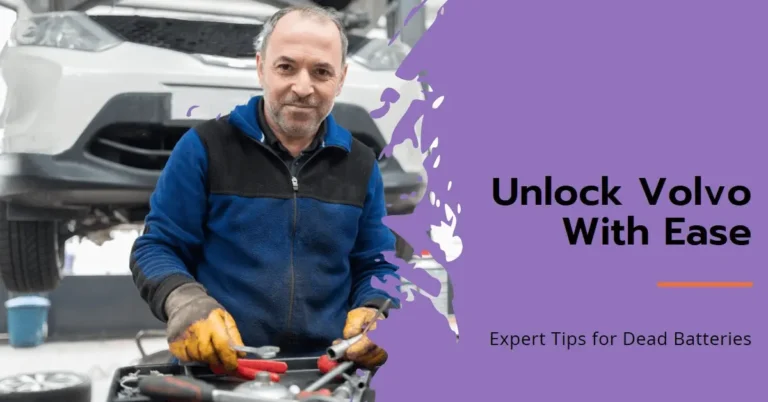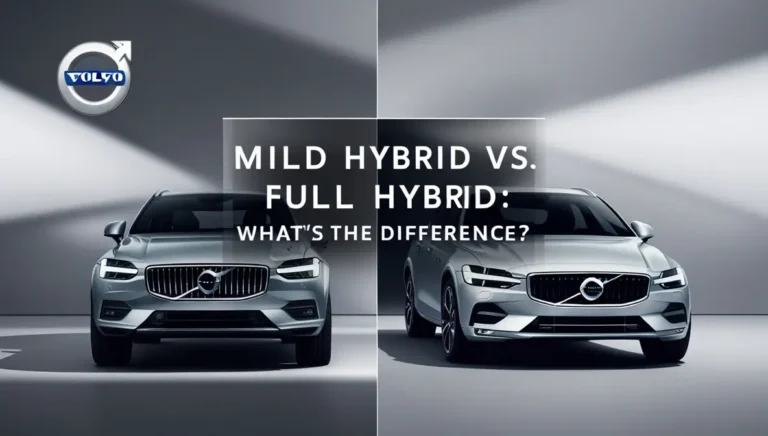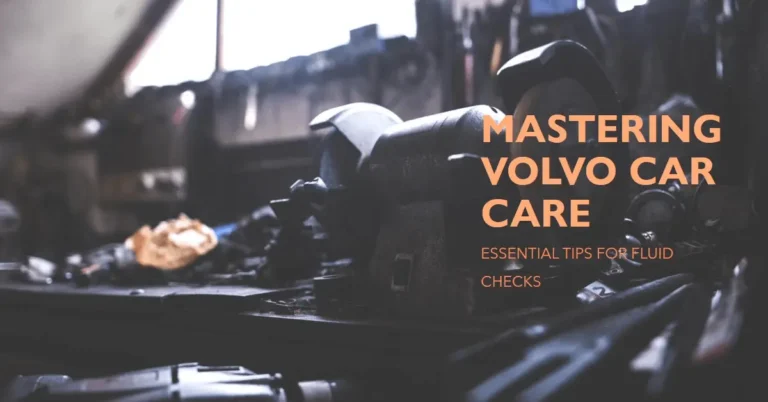Why Is Volvo Service So Expensive?
Ever felt like your wallet was crying every time you took your Volvo for a tune-up? You’re not alone! As a proud Volvo owner, I’ve often wondered why servicing these Swedish beauties feels like buying a small island. Let’s dive into Volvo maintenance and uncover why it might cost you an arm, a leg, and maybe your favorite coffee mug.
The short answer? Volvo service is expensive because of the brand’s luxury status, specialized parts, advanced technology, and the need for highly trained technicians. But don’t worry, we’ll break it down so even my 10-year-old nephew can understand (and maybe start saving his allowance for future Volvo ownership).
Understanding Volvo’s Maintenance Costs
How Volvo Compares to Other Brands
Let’s talk numbers, shall we? Owning a Volvo isn’t like owning a bicycle – it will cost you. On average, you’re looking at about $769 to $1,051 per year for maintenance. Before you choke on your Swedish meatballs, consider this: they are cheaper than other luxury brands like BMW, which can set you back a cool $1,323 annually.
I remember when I first got my Volvo S60. My buddy Jake, a Toyota owner, laughed at me, saying I’d be eating ramen noodles to afford the upkeep. Well, the joke’s on him – I still eat ramen noodles, but by choice, not necessity! While Volvo’s costs are higher than those of mainstream brands like Toyota (around $602 a year), they’re not the wallet-destroyer some people make them out to be.
Here’s a fun fact: Volvos need repairs slightly more often than the average car. But – and this is a big but – when they need fixing, it’s usually not as severe. Only about 9% of Volvo repairs are for major issues. So, while you might visit the shop more often, you’re less likely to hear those dreaded words: “You might want to sit down for this…”
Cost of Common Volvo Services
Let’s talk about the bread and butter of car maintenance – the oil change. For a Volvo, you’re looking at $100 to $180. I know, I know, it sounds like liquid gold, right? But here’s the thing – Volvos are picky eaters. They require specific synthetic oils that cost more than those you’d put in a run-of-the-mill sedan.
Other services can also make your credit card wince. A wheel alignment? That’ll be $129.95, please. Need a new battery? Hope you’ve got $225 lying around. It’s enough to make you consider becoming a mechanic yourself. (Spoiler alert: I tried this. Let’s just say my Volvo and I aren’t on speaking terms right now.)
Factors Contributing to the High Service Costs
Specialized Parts and Limited Aftermarket Availability
Ever tried finding a needle in a haystack? Finding aftermarket parts for your Volvo can sometimes feel just as challenging. Volvo loves its proprietary parts, many of which are imported straight from Europe. They’re trying to make your car as Swedish as possible – great for quality but not for your bank account.
I learned this the hard way when I needed a new side mirror. “No problem,” I thought, “I’ll just grab a generic one.” Three auto parts stores and one very confused look from a Volvo mechanic later, I realized my mistake. Volvo parts are like that one friend who refuses to shop anywhere but designer stores – exclusive and expensive.
Advanced Technology and Software Requirements
Modern Volvos are like rolling computers. They’re packed with more tech than a Silicon Valley startup. While this means your car is safer and smarter than ever, repairs can get… complicated.
Take it from someone who once thought they could DIY through a dashboard warning light – these cars often need specialized diagnostic tools and software. It’s not just about replacing a part; it’s about ensuring all the hi-tech systems play nicely together afterward. This usually means a trip to an authorized Volvo service center, where they can access the fancy tools and software needed to keep your Swedish chariot running smoothly.
High Cost of Labor
Remember when I mentioned becoming a mechanic myself? Well, there’s a reason Volvo mechanics get paid the big bucks. Working on these cars requires specialized knowledge and training. It’s not just about knowing cars; it’s about knowing Volvos.
Even independent shops often charge more for Volvo repairs because of the extra expertise required. And if you go to a dealership? Let’s just say they’re not known for their bargain prices. At least you know your car is in good hands – expensive, but good hands.
The Role of Regular Maintenance in Managing Costs
Importance of Scheduled Maintenance
Here’s a little secret I’ve learned over the years: regular maintenance is your best friend when it comes to keeping costs down. It’s like going to the dentist – sure, it’s not fun, but it’s a lot better than dealing with a root canal down the line.
Routine services like oil changes, tire rotations, and filter replacements might seem like a pain, but they’re crucial for avoiding those big, scary repair bills. Think of it as preventive medicine for your car. Many Volvos offer prepaid maintenance plans that save you about 20% on service costs. It’s like a loyalty program, but instead of free coffee, you get… well, a well-maintained car.
How Maintenance Costs Change Over Time
Owning a Volvo is like raising a child – the expenses change as they grow older. In the first three years, things are pretty predictable. Many new Volvos come with complimentary services, so you’re living the good life.
But then, just like a teenager, your Volvo hits that five-year mark and things can get… interesting. The warranty period ends, and suddenly, you’re facing the possibility of more complex repairs. It’s like your car’s going through puberty, but instead of mood swings, you get unexpected trips to the mechanic.
Common Repair Issues with Volvo Vehicles
Electrical System Complexities
If Volvos have an Achilles’ heel, it’s their electrical systems. These cars have more wires than a telecom company; sometimes, they play tricks on you. I once had a Volvo that would randomly decide the trunk was open – while I was driving. It was like having a car with a sense of humor, except I wasn’t laughing.
These electrical quirks can be more common in places with extreme weather. If you live somewhere that’s either a sauna or an ice box, your Volvo’s electrical system might decide to throw a little tantrum now and then.
Expensive Components and Safety Features
Volvo’s obsession with safety is great when you’re on the road but not so great at the repair shop. All those fancy sensors and cameras that keep you safe? They cost a pretty penny to replace when they call it quits.
And it’s not just about swapping out parts. These systems often need to be recalibrated after repairs, which requires special tools and know-how. It’s like your car needs to go back to school every time it gets a new part.
Strategies to Reduce Volvo Maintenance Costs
Opting for Extended Warranties
Consider an extended warranty if you’re in it for the long haul with your Volvo (and let’s face it, these cars can last forever if you treat them right). Volvo offers the Lifetime Replacement Parts & Labor Warranty, which sounds about as exciting as watching paint dry but can be a real lifesaver.
These plans can cover essential parts like batteries, brake pads, and more. It’s like insurance for your car’s parts – not the most thrilling purchase, but you’ll thank yourself later.
Using Authorized vs. Independent Service Centers
Here’s where you need to channel your inner strategist. Authorized Volvo centers are great for complex issues and anything involving those high-tech systems we discussed. But for simpler stuff like oil changes? An independent shop might save you some cash.
I’ve found a happy medium using a local mechanic specializing in European cars for routine maintenance, but I head to the dealership for anything that makes me go, “Huh, that doesn’t sound right.” It’s all about balance – like eating healthy but enjoying the occasional pizza.
Long-Term Value of Investing in Volvo Maintenance
Impact on Vehicle Longevity
Here’s the thing about Volvos – they’re built to last. With proper care, these cars can outlive your favorite pair of jeans (the ones you’ve had since college). Consistent upkeep is key. It’s like exercise for your car – regular maintenance keeps it fit and ready for the long haul.
Preventative care is crucial. Regular alignment checks and timely timing belt replacements can save you from those heart-stopping (and wallet-emptying) major breakdowns. Trust me, the sound of a timing belt snapping is not something you want to hear – ever.
Resale Value and Maintenance Records
Let’s talk about the future – specifically, the day you might want to part ways with your beloved Volvo. A well-maintained Volvo is like a well-trained dog – everyone wants one. Keeping detailed service records is like creating a resume for your car, which can boost your resale value.
Buyers love seeing a Volvo with a thorough maintenance history. It’s like dating someone who has their life together – very attractive. So, while you might wince at the maintenance costs now, the future might be thanking the present when it’s time to sell.
In conclusion, owning a Volvo is a bit like having a high-maintenance friend – expensive at times, but worth it for its quality and reliability. Yes, the service costs can be eye-watering, but with smart strategies and regular care, you can keep your Swedish beauty running smoothly without breaking the bank. And remember, at least you’re not paying for a Lamborghini oil change – now that’s a real wallet-buster!







